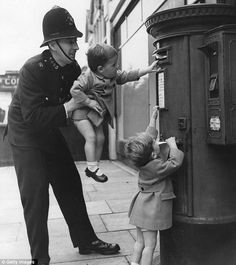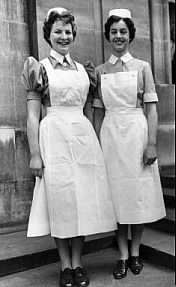
An Incredible Story of a Life Devoted to Dance and So Much More
THE PLAYFUL, UNAFRAID CHILD
Outside the studio work, I was known as a “street urchin” in popular jargon, always with a group of like-minded friends running, climbing, leaping, swinging, and doing whatever was available to do in the streets of London after the war. Our house, 39 Primula Street, was set back in a lovely little green setting between the Great West Road and the major East-West railway line (described heretofore).
At the end of our street surrounded by a high wrought iron fence to close it off as “out of bounds” was the ruin of a once very beautiful Gothic church that had been bombed during the war. It was gutted, but the essential walls of the structure remained. Over time, people somehow found a way into it and threw junk into the original nave of the church. It was a favorite place to have adventures, and one day we decided to scale the façade inside the church gaining niche-holds in the damaged, blitzed walls. There was an organ platform like a broad shelf where we could rest about halfway up. From there, we could scramble up to the belfry. I don’t remember exactly how we did it.
The bell was still there with a singed stub of rope hanging from it. We were exhilarated by the danger, and when someone challenged, “Who’s going to ring the bell?” (speaking in sharp cockney), I heard myself saying, “I will.” If I stood on the small platform under the bell, I could jump up and grab it. Well, I had to do a straight-up jump to get it until the bell rang, and I can remember it as if I were doing it now. There was a big cheer from all of my friends, and then somebody said (in the cockney accent), “’Ere comes a copper!” which means, “Here comes a policeman.”
I let go of the rope and dropped down by bumpy stages. I remember reaching the organ platform and rolling off of it into the nave of the church landing miraculously on some bedsprings still attached to their wooden frame. It probably saved my life! (Chuckles…) I was alone. It was an Alice in Wonderland moment until I found that I couldn’t stand up and realized that I was somehow impaled on that frame.
I remember pulling myself up, and with my hand over the wound on the outside of my left thigh, I hobbled to the exit between the railings and ran the short distance to my house crying loudly.
As luck would have it, my dad was home for lunch. Using the stroller pram that had been the transport for my birth, he rushed me to the same hospital. I remember being wheeled on a gurney with my dad following behind me. I looked back, and he was touching me on the shoulder with a big smile. “You’re going to be fine.”
I was back on my feet very quickly but not able to return to dancing for a while. It turned out to be a pivotal time because while I was recovering and not dancing, my parents decided that I should not continue with it. It was taking more time, and dancewear was becoming more expensive. I would soon be taking the important “Eleven Plus” exam at school and transitioning to my secondary school and an increased study load.
I was absolutely heartbroken, devastated. When I heard that and noticed the way my heart felt, I knew that it was going to take a long time to get over this. Dance was all I wanted to do, and I couldn’t bear the thought of giving it up.
Barbara Speake came around to the house to try to persuade my mother to let me continue. It was quite a long conversation between them and a little argument going on. They discussed the situation on the doorstep, but my mother remained firm even after Ms. Speake assured her that she would waive the fees.
I cried for weeks, feeling desolate. Eventually, I turned to swimming at my Dad’s request and embarked on several years of competition swimming and diving. Dad was thrilled. He had always loved water sports and began to take me to Central London where the Olympic team practiced. We attended meets, and I achieved some successes, especially in diving where the ballet training was an advantage in achieving form and line. Unfortunately, his enthusiasm was not matched by me. I actually disliked it though I continued for a year or two for his sake. I was thin and small and always cold in the pool. I would get out of the water shivering vigorously (makes blubbering noises). My lips, fingers, and toes would be blue, and it took what seemed like a very long time for my body temperature to return to normal.
Even in the summertime, the weather was cool, and meets were held in outdoor pools. By then, I was doing fixed platform dives from 5 and 10 meters up. That was very high. Isn’t that 30 feet? Yes. Wow… It gave one a really nice lift and time to design a clean entry. From the 10 meter board, though, I simply wasn’t strong enough to hole firm form entering the water. I would crumple. A 10-meter dive gave me an instant headache. And I was cold, of course. (Chuckles…) I didn’t like it.
So one day, I cried all the way home and said, “Daddy, I don’t want to do this anymore.” I think I broke my father’s heart. That’s what he wanted for me, but I had not lost my passion for dance.
(To be continued in following sections…)




